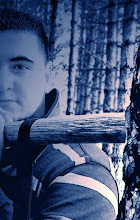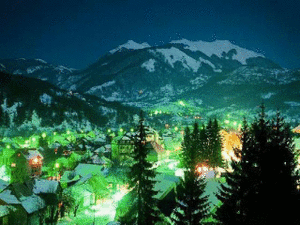
From its beginnings, Kolašin saw many battles and combats
The town of Kolašin is situated on the right bank of the Tara River. Its position at 954 meters above sea level makes it, together with the hinterland, a healt resort, something even the highest peaks of many a mountain canot boast witth. The town is surrounded by Sinjavina, Kapa moračka, Maganik, Bjelasica, Vučja and Ključ Mounts.Kolašin , fortress- settlement, was raised by the Turks in the middle of the 17 th century in the namesake village in Nikšić district (nahiye). The village of Kolašin was first mentioned in the Sultan‘s Decree in 1565, by which the deceased Grand Duke Miloš was replaced by his son Todor. The Turkish town was named after the former village of Kolašin.In 1651, Patriarch Gavrilo assigned to Eparch of Zahumsko, Vasilije Jovanović Ostroški, the eparchy of Nikšić, Plana, the Kolašinovićevs and the Morača. This document also, like the one from 1667, shows that the Orthodox Christian population of this region, called the Kolašinovićes, was organized in a recognized and respected tribal community of the Kolašinovićes. The historical science and sources recognize the surname Kolašinović.By all odds, the name was also derived, same as the name of the region, fortress - settlement and the tribe from the same source - the village of Kolašin.The origin and the meaning of the word Kolašin is still unknown although there is a whole range of linguistic hypotheses.According to one version there was a Slavic Duke Kolašin who erected the settlement of Kolašin. Maybe the village of Kolašin from Sultan‘s Decree was that Kolašin from oral tradition and the settlement of the Slavic Duke Kolašin whose title had been inheritable and the tribe influential.By the decisions of the Berlin Congress, in 1878, Kolašin officially became a part of Montenegro. Constant fierce battles had been waged by the Rovčanis, Drobnjacis, Moračanis, Vasojevićis, Uskocis and other Montenegrins to liberate this and other parts of the land from the Turkish aggression and rein of terror. It was way back 1798 when young Mina Radović, the son of tke killed Duke Radule, who had been killed by the Turks, ambushed and killed Hasanbeg Mekić, who had come to collect taxes, in the vicinity of Morača monastery. The attack had been arranged with the Vladica and the Montenegrin Grand Duke Petar I. Mina Radović received the title of Duke and, in 1799, during the convention of the people‘s prominent representatives of Montenegro and the Hills held in Cetinje, he was nominated a member of the Court Administration of Montenegro and the Hills , in charge of judical and administrative power. This meant that the Montenegrin government considered the Morača region to be a legitimate part of Montenegro. For this to become reality, many battles were to be fought throughout the following eight decades.There is a dopcument written by Duke MIljan Vukov, who headed the Vasojevićes in that battle, about the attack on Kolašin in 1858. It was the bloodiest battle in whole Montenegro: ‘‘I participated in many a battle as ? Flag bearer, captain and war lord – he testified – but none of them had been so fierce and bloody as was the battle for taking Kolašin in 1858, which was, truly, one of the bloodiest that had ever happened in the vicinity of Montenegro.‘‘The victory in that bloody battle established the new borders of Montenegro towards the regions that still remained under the Turkish rule. Fighting for liberation continued on the left bank of the Tara River around the Lower Kolašin villages. The Lipovo battle in 1872 is particulary remembered. There was no peace until the Berlin Congress when Kolašin joined the principality and later the Kingdom of Yugoslavia created immediately after the World War I, all until it was disintegrated.A year or two after the Berlin Congress, the Kolašin brigade of Montenegro‘s people‘s army was formed. During the World War I , by the end of 1915 and in the beginning of 1916, it played a mayor part under the command of Serdar Janko Vukotić as part of the Sandžak army.In the famous Mojkovačka battle, it successfully defended the ‘‘gates of Mojkovac‘‘ having repelled all the attack by much more numerous soldiers of the Austro - Hungarian army. In the liberation wars between 1912 and 1918, the brigade lost more than 1000 soldiers and officers.In the Second World War, the Kolašin region again suffered hardship, heavy human consualties and distruction. After the Italian capitulation, this part of Montenegro was free and so, on November 15 and 16, 1943, the First Session of the National Antifascist Council of Montenegro and Boka was held in Kolašin, attented by 544 delegates from all regions of Montenegro and ny 42 of them from Kolašin district, and its decisions were of critical importance for rercopnstruction and rebuilding of the Montenegrin state. In those days, Kolašin was the ‘‘war capital‘‘ of Montenegro.The very town of Kolašin changed hands several times between 1941 and 1944. It was 18 times bombarded by the Germans and Italians. Finally, on December 29, 1944, the town was liberated by the soliders of the fifth Montenegrin poletarian bigade. In the national liberation struggle in the period of 1941-1945, more than 1400 soldiers from the Kolašin region took part and almost 400 died. Around 250 patriots lost their lives in various aggressor‘s torture chambers and on execution sites, and there were quite a lot of futile victims of fratricidal war. Bare Kraljske, Lubnice, Crkvine, Lug pokraj Tare and Breza are only few of the places in the Kolašin region that will be remembered by their victims and killings.Nine people from Kolašin were decorated as a national heroes: Veljko Vlahović, Spasoje Dragović, Boško Janković, Vukman Kruščić, Milutin Lakićević, Savo Mašković, Jelica Mašković, Janko Ćirović and Savo Drljević. As young students, Veljko Vlahović, Mijat Mašković, Mojsije Stevanović and Milovan Ćetković fought against fascism in Spain in 1937. Mijat Mašković and Mojsije Stevanović were killed there while Veljko Vlahović was seriously wounded…






